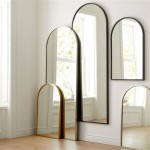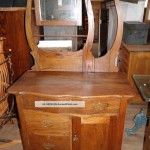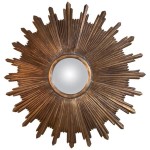How to Hang a Mirror on a Tiled Wall
Hanging a mirror on a tiled wall presents unique challenges compared to drywall. The hard, slick surface of tile requires specific techniques and hardware to ensure a secure and lasting installation. This article outlines the necessary steps and considerations for successfully hanging a mirror on a tiled wall.
Planning and Preparation: Careful planning is crucial for a successful outcome. Begin by determining the desired location of the mirror. Consider the surrounding elements, such as lighting fixtures, electrical outlets, and plumbing. Measure the mirror's dimensions and mark the desired position on the wall using a pencil or masking tape.
Choosing the Right Hanging Method: The weight and size of the mirror will dictate the appropriate hanging method. Lightweight mirrors can often be hung using adhesive strips specifically designed for tiled surfaces. Heavier mirrors will require more robust solutions, such as heavy-duty adhesive, mirror clips, or drilling into the tile.
Using Adhesive Strips: Adhesive strips offer a convenient, damage-free method for hanging lighter mirrors. Ensure the tile surface is clean and dry before applying the strips. Follow the manufacturer's instructions for proper placement and weight limits. Note that adhesive strips may not be suitable for all tile types or textured surfaces.
Using Heavy-Duty Adhesive: For heavier mirrors, specialized heavy-duty adhesive designed for tile and other non-porous surfaces is recommended. This type of adhesive provides a stronger bond than standard adhesive strips. As with adhesive strips, ensure the tile surface is clean and dry before application. Follow the manufacturer's instructions regarding weight limits and curing time.
Drilling into Tile: Drilling into tile requires specialized tools and techniques. Using a standard drill bit can easily crack or chip the tile. A diamond-tipped drill bit specifically designed for tile and glass is essential. A masonry bit can also be used but may be less precise. Before drilling, mark the exact location of the holes with a pencil or masking tape. Apply gentle pressure while drilling and use a low drill speed to prevent damage. Water can be used to lubricate the drill bit and prevent overheating.
Using Mirror Clips: Mirror clips, also known as J-clips or Z-clips, provide a secure and adjustable method for hanging heavier mirrors. These clips are typically installed by drilling into the tile and securing the clips with screws. The mirror then rests on the clips, which hold it in place. This method allows for minor adjustments to the mirror's position after installation.
Selecting the Right Hardware: Choosing appropriate hardware is vital for a secure installation. When drilling into tile, use wall anchors appropriate for the tile material and the weight of the mirror. Ensure screws are long enough to penetrate the tile and provide sufficient grip in the wall behind it. For heavier mirrors, consider using toggle bolts or molly bolts for added strength.
Protecting the Tile Surface: Before drilling or using adhesive, protect the surrounding tile surface from scratches and damage. Masking tape can be used to cover the area around the drilling site or where adhesive will be applied. This also provides a cleaner working surface and helps prevent adhesive from spreading onto unwanted areas.
Ensuring Level Placement: Accurate measurement and level placement are essential for a visually appealing result. Use a level to ensure the mirror is perfectly horizontal during installation. Adjust the mirror’s position as needed before the adhesive sets or the screws are fully tightened. For larger mirrors, consider using shims to achieve perfect leveling.
Dealing with Grout Lines: Grout lines can complicate drilling and adhesive application. If possible, try to position drill holes or adhesive strips in the center of the tile, avoiding grout lines. If drilling into a grout line is unavoidable, use a smaller drill bit to create a pilot hole before using the larger tile bit. This helps prevent the drill bit from slipping or cracking the tile.
Safety Precautions: Always prioritize safety when working with tools and hanging heavy objects. Wear appropriate eye protection when drilling. When using a ladder, ensure it is stable and on a level surface. If the mirror is exceptionally heavy, enlist the help of another person to assist with lifting and positioning.
Post-Installation Considerations: After the mirror is securely in place, inspect the installation to ensure it is stable and level. Clean any excess adhesive or debris from the tile surface. Consider applying a bead of sealant around the edges of the mirror where it meets the tile to prevent moisture from getting behind the mirror.
By following these steps and carefully considering the specific requirements of the mirror and tile surface, individuals can successfully hang a mirror on a tiled wall, creating a beautiful and functional addition to their space.

How To Hang Mirrors On Tile 3 Ways A Bonus The Palette Muse

How To Hang A Mirror On Tile Wall Remington Avenue

How To Hang Mirrors On Tile 3 Ways A Bonus The Palette Muse

How To Hang Mirrors On Tile 3 Ways A Bonus The Palette Muse

How To Hang Mirrors On Tile 3 Ways A Bonus The Palette Muse

How To Hang A Bathroom Mirror Over Tile Wainscoting Mimzy Company

How To Hang A Mirror On Tile Wall Remington Avenue

Tutorial How To Hang A Bathroom Mirror The Diy Playbook

How To Drill Into Tile Hang Things Maison De Pax

How To Hang A Mirror On Wall Without Nails








